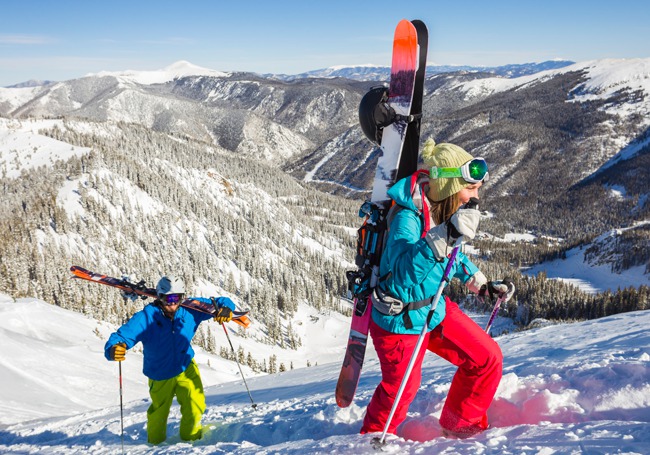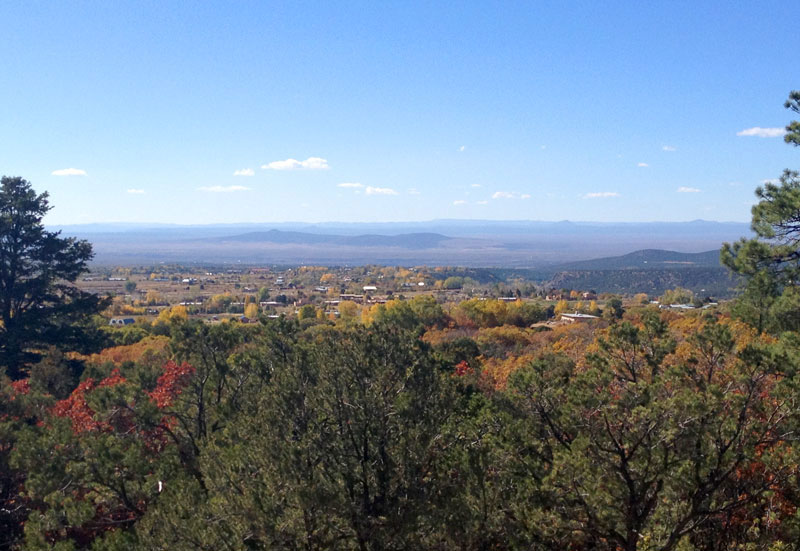This story appears in the November 3, 2014 issue of Forbes.
by Forbes Staff contributor Everett Potter
When hedge fund billionaire Louis Bacon bought northern New Mexico’s Taos Ski Valley (TSV) in December 2013, it baffled many in the ski world. Twenty miles outside the latter-day-hippie redoubt of Taos itself, TSV is arguably the least likely major U.S. ski resort to attract a highflier’s attention. It’s not a posh haven like Deer Valley or Beaver Creek but a none-too-chic outlier with an architectural hodgepodge of aging condos and ersatz alpine chalets. And its visitor base–it’s been drawing the same dedicated families for decades–likes it just the way it is.
Bacon, the 58-year-old founder of Moore Capital, sees it differently. “I have owned property in Taos Ski Valley for 20 years,” he says. “The area is stunningly beautiful, as well as culturally and historically rich. As for the skiing, I think it provides some of the most varied terrain in the country, and it has easy access to steep off-piste chutes and tree runs.”
 In other words, he’s a real skier. And like many powder hounds before him, he’s been seduced by one of America’s most challenging hills. It can happen the first time you ascend this magic mountain covered with 300 inches of perfect snow, riding a lift with local stoners getting in their morning tokes. TSV is a seriously laid-back world-class ski mountain, beloved for its staggeringly steep expert terrain, endless views and hidden shots of champagne powder in the trees. Better yet: It’s yours, because everyone else seems to have forgotten it’s there. TSV attracted only 215,000 skier visits last winter, while Vail, for example, chalked up close to 2 million.
In other words, he’s a real skier. And like many powder hounds before him, he’s been seduced by one of America’s most challenging hills. It can happen the first time you ascend this magic mountain covered with 300 inches of perfect snow, riding a lift with local stoners getting in their morning tokes. TSV is a seriously laid-back world-class ski mountain, beloved for its staggeringly steep expert terrain, endless views and hidden shots of champagne powder in the trees. Better yet: It’s yours, because everyone else seems to have forgotten it’s there. TSV attracted only 215,000 skier visits last winter, while Vail, for example, chalked up close to 2 million.
Bacon aims to change that. Just don’t expect Bogner-suited crowds handing the keys of their Range Rovers to a valet just yet. His first step is to run a lift up the fabled Kachina Peak, one of the most cult-prized, hard-core in-bounds areas at any American ski resort. Until now the only way to access it was to shoulder your skis for a sometimes grueling and breathless 45-minute hike in deep snow to the top of the 12,500-foot peak. In December you can save your breath and simply take the new Kachina Peak Lift to the top. Other terrain changes include the opening of Wild West, 60 acres of hike-to gladed terrain that is meant to show a commitment to the hard-core skiers who call Taos their home hill.
When Bacon adds that he has “developed a deep appreciation for the character of this place and its unique setting in the Sangre de Cristos,” he’s not just blowing powder in your face. He’s made headlines as a conservationist who, among other things, donated easements on about 167,000 acres of his Trinchera Blanca Ranch in Colorado (which he bought from the Forbes family) to the U.S. Fish & Wildlife Service.
Next on his agenda is the ski town itself, where the idea, according to TSV CEO Gordon Briner, “is to create one great village, not a couple of interesting real estate developments.”
The word one hears when the village redevelopment is mentioned is “European,” and, indeed, TSV has deep Euro roots. It was opened in 1954 by Ernie Blake, who had fled Germany in the Thirties. Others joined him, including Frenchman Jean Mayer, the ski school head, who opened the Hotel St. Bernard in 1960, a place that resembles the kind of family auberge one might find in Chamonix.
The hotel will stay, but much else will change, including access to TSV. Bacon has been working with the local community to have the airport become a more elite jetport, capable of handling up to 45-passenger regional jets. Eliminating the current three-hour road trip from Albuquerque would be a serious game-changer.
Meanwhile, Bacon puts forward three major objectives for TSV: to revitalize the core village, to retain the historic appeal of the iconic ski valley and to earn a return on the effort.
“Any two of these are somewhat straightforward,” says Bacon. “The challenge is accomplishing all three.”


